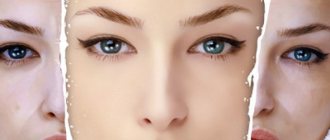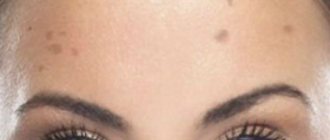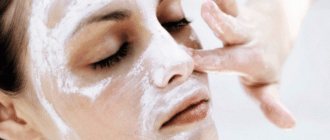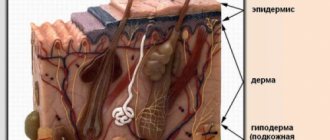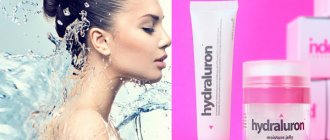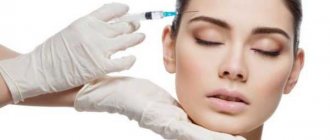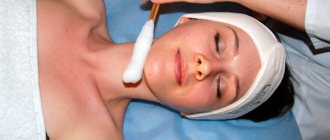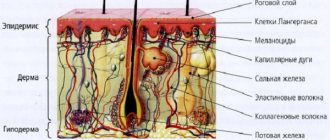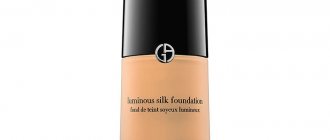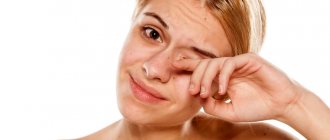DOES PEELING HELP ACNE?
First, let's figure out what the 3 main types of acne (which are scientifically called by the general term “blackheads” or “acne”):
- Comedones (blackheads);
- Pustules (pustules-inflammations);
- Papules (“nodules” protruding above the skin).
Indirectly, acne spots (post-acne) can also be included in these categories.
All these imperfections are very unpleasant, and the prospect of peeling off the top layer of horn cells along with all the problems looks very attractive.
This is precisely the meaning of peeling - a procedure that, due to controlled stress on the skin (for example, an acid-based drug), triggers the regeneration process in tissues. As a result, collagen and elastin fibers are naturally renewed, and, depending on the depth of the intervention, different numbers of layers of skin can be exfoliated.
Causes of acne formation
However, you should remember: treating acne with peelings is not always a panacea. Some inflammations occur due to internal disorders in the body (infections, hormonal imbalance, chronic diseases). Such cases may require prior treatment with medications:
- Irregular care: sebaceous plugs appear;
- Increased activity of the sebaceous glands;
- Heredity;
- Long-term exposure to chlorine;
- Taking steroids or halogen-containing (antiseptic) agents;
- Inflammation in areas of ingrown hairs;
- Allergy;
- Infections in wound sites;
- Hormonal changes;
- Intestinal disorders;
- Subcutaneous mite.
CAUTION: CONTRAINDICATIONS!
With fresh purulent inflammations or recently squeezed out (bleeding) pimples, peeling is strictly prohibited! A burn will appear in this place!
In addition, foci of infection can spread to healthy tissue, so fresh rashes must first be treated!
The remaining contraindications are standard: it is forbidden to do peeling with a fresh tan, against the background of a weakened immune system, or if you are allergic to the components of the exfoliant.
We recommend: Peeling as an effective method for scars. COMPLETE GUIDE
Only a specialist can prescribe the correct method in each individual case, because self-diagnosis or unprofessionalism are fraught with post-peeling complications.
CAUTION: PARASITES!
If acne is caused by demodicosis (subcutaneous parasites), peeling will only make the situation worse!
Briefly, indications and contraindications for treating acne with peelings can be formulated in the following table:
| IT IS FORBIDDEN | CAN |
|
|
The principle of action here is this: inflammation is caused by bacteria, and their activity can be reduced if you regularly (every month) exfoliate dead horn cells. Deprived of their usual nutrient medium, the bacteria die.
Which peels are suitable for acne skin?
If there are inflammatory elements on the skin and the integrity of the epithelium is compromised, then phenol, pure milk and glycolic peels are contraindicated. Other types of procedures can be performed with caution.
Glycolic
Glycolic acid is used carefully to treat acne. It has a small molecular weight, so it penetrates into the deep layers of the dermis.
In this case, not only dead cells of the stratum corneum are destroyed, but also healthy epidermis. In damaged areas, the risk of inflammation increases.
Therefore, acne often worsens after glycolic acid.
Important! To prevent this, it is recommended to use glycolic acid only in combination with other AHAs or use antibiotic creams in post-peel care.
Price: 600–2000 rubles per procedure.
Almond
Often used for problem skin, as mandelic acid has a pronounced anti-inflammatory and disinfectant effect. It is similar in action to the antibiotic Erythromycin, but does not cause resistance in bacteria and acts against all microorganisms (both viruses and fungi too).
Mandelic acid can be applied even to active inflammations.
Price: 2000–5000 rubles per procedure.
Salicylic
Salicylic acid (BHA) is a strong keratolytic; it penetrates pores better than others and dissolves sebaceous plugs. To improve product penetration and reduce discomfort during the procedure, BHA is used in combination with other acids.
Price: 1500–4000 rubles per procedure.
Salicylic acid is a common ingredient in cosmetics for skin with acne and enlarged pores. Manufacturers actively include it in skin care and even decorative cosmetic products. A toner with BHA has a pigment-constricting effect, disinfects the skin and evens out the Ph balance after washing.
Foundation with Salicylic acid also helps to isolate inflammatory elements and dry them out. Popular tones with salicylic acid: Dermablend 3D SPF 25 from Vichy, Anti-Blemish Solutions Makeup from Clinique.
Jessner Peel
A combination drug is used (salicylic acid + lactic acid + resorcinol). This peeling can also be performed for active inflammation. It dries out pimples well, dissolves comedones and exfoliates dead cells.
Jessner's peel can be superficial or medium. The depth of impact depends on the number of layers.
The cosmetologist applies the mixture of acids, and the client washes it off independently after 8–15 hours.
Price: 3500–8000 rub . for the procedure.
"Yellow" peeling
The procedure is carried out using retinoic acid (tretinoin). This is the active form of vitamin A. The procedure is the same as for Jessner.
“Yellow” peeling gives a pronounced result, smoothes the relief, speeds up healing, prevents the appearance of new comedones, narrows pores, and helps even with deep cystic acne.
Attention! “Yellow” peeling can cause aggravation after the procedure, so the cosmetologist prescribes maintenance therapy with tretinoin or antibiotics.
Price: 6500–15000 rub. for the procedure.
Tretinoin in dermatology is the “gold standard” for the treatment of acne. It can be used not in peeling courses, but in daily care. Preparations with tretinoin:
- Retin A (original drug, everything else is generic);
- Renova;
- Acnelyse;
- Retino-A;
- Stieva-A;
- Airol;
- Locacid.
Tretinoin is not certified in the Russian Federation, therefore, only drugs with adapalene (a derivative of retinoic acid) can be purchased in retail pharmacy chains: Differin, Bezugray, Adolen, Effezel.
TCA peeling
Trichloroacetic acid (TCA) is used primarily locally. It is contraindicated to apply to active inflammations. This drug is chosen for severe textural problems, post-acne, and scars. TCA peeling is classified as medium peeling. The rehabilitation period is 1–2 weeks.
Price: 3000–15000 rubles per procedure
WHAT TYPES OF PEELINGS HELP FROM ACNE
Depending on the specific problem, doctors prescribe both superficial and medium and sometimes even deep phenol peels. But the most common acne peels are superficial. They gently cleanse, normalize cellular respiration and the functioning of the sebaceous glands, without causing major injuries. This is why light exfoliation is most effective for solving acne problems.
Medium peels are usually used to combat post-acne and scars. Well, deep exfoliation is prescribed extremely rarely, for very serious indications.
Which peeling is better for blackheads and acne:
- Hardware methods (ultrasound, laser),
- Chemical (almond, retinoic),
- Mechanical (microcrystalline cleaning and brossage).
Top home remedies for peeling
Here are the most effective drugs for problem skin, which can be purchased for less than 1,500 rubles:
- Gel with chitosan, based on glycolic acid 10% from MEDICAL COLLAGENE 3D (Russia). Price 700 rub./30 ml.
- Peeling with mandelic acid 5% from ALPIKA (Russia). Price 1500 rub./30 ml.
- AXA 8% / Homework from PREMIUM (Russia). Acids in the composition: glycolic, malic, citric, lactic. Price 900 rub./100 ml.
- Raspberry peeling for oily skin from New Line. Acids in the composition: glycolic (20%), lactic (5%), salicylic. Price 800 rub. for 100 ml.
- Salicylic, retinol, milk, Jessner peels from Home-Peel (Ukraine). Average price - 1500 rubles. for 10 ml.
Also, many products with acids are produced by Korean brands. Korea in the beauty world is perceived as “New France”. Today, almost all innovations come to the market from the South Caucasus.
Acid pads are packages of cotton pads soaked in an acid-containing product. The application procedure is the same as with regular peeling, but the release form is convenient and hygienic. They are produced by the following brands: Missha, Scinic, A'PIEU, Cosrx.
A rolling mask is an excellent alternative to scrubs, which are contraindicated for rashes, as they injure it with abrasive particles and spread the infection to unaffected areas. The roll should be applied in a thin layer to a clean face, wait half a minute and begin to “roll” the mask over the skin. The mask capsules are removed along with dead skin particles. You can use a rolling pad to remove peeling after regular peeling. But this is an optional remedy; it will not help get rid of acne. Rolling masks are produced by the following brands: Secret Key, Ekel, Mizon, Shelim, Tony Moly.
HARDWARE METHODS
Ideal for non-contact yet deep processing. This is especially true with acne because it is an infection that can spread across the face. (This is why, by the way, you should not use homemade scrubs if you want to get rid of pustules.)
In addition, such techniques can effectively eliminate traces of rashes, and thanks to modern technologies, it is possible to plan treatment tailored to the patient’s specific skin type.
Ultrasonic
Processing in this case occurs using ultrasound waves. Old cells inside the tissues are destroyed, the pores are cleansed of sweat, dirt and makeup, blood circulation increases, and the skin becomes healthier. This type of cleaning is the least traumatic.
Laser
The laser beam, using heat, eliminates imperfections point by point, so after the procedure you can lead your usual lifestyle. The depth of treatment of the skin within this method can be adjusted by a doctor and includes, for example, laser resurfacing or erbium laser treatment.
We recommend: 16 PEELINGS FOR VAUSIONS
It is especially recommended for getting rid of teenage acne due to its non-contact nature (inflammation does not spread across the face). The main lasers for treating acne are diode and green (Nd:YAG).
Mechanical impact
Cleanings such as dermabrasion or brossage allow you to eliminate imperfections mechanically (using grinding with brushes and abrasive particles). The skin gets rid of unevenness, age spots, fine wrinkles and scars, but the disadvantages include pain and the presence of a recovery period.
Disadvantage: the procedure cannot be used with fresh inflammations (more suitable for prevention). Another contraindication to mechanical exfoliation is dry or sensitive facial skin.
Is it possible to do this and does it help in treatment?
With the help of peeling, cells whose life cycle has completed are removed from the surface of the skin.
Peeling:
- evens out the terrain;
- reduces pores;
- removes acne marks;
- gives the skin a healthy glow.
We recommend: 4 types of peeling after Botox: is it possible to do peeling and when, what do cosmetologists advise?
also help reduce the oiliness of your facial skin, which slows down the formation of new acne. A disease such as acne cannot be cured with the help of cosmetic procedures alone.
We need a comprehensive approach to the problem, which will include examination of the gastrointestinal tract, endocrine and genitourinary systems. You may need to reconsider your diet and reduce the amount of stress in your life. But during and after treatment, to maintain the beauty of the skin, you can and should do peeling. It is important to choose a suitable procedure together with a cosmetologist, which you can then carry out independently at home.
CHEMICAL METHODS AVAILABLE AT HOME
The most popular chemical peel for acne is enzymatic, or enzymatic: it is delicate, acts quickly and causes minimal harm. This is explained by the gentle composition: the enzymes contain natural acids of low concentration (obtained from apples, grapes, pumpkin, etc.).
More intense acid types of exfoliation are no less effective in combating rashes: they trigger natural recovery mechanisms in the skin and are also quite often prescribed by cosmetologists.
Salons also offer a special “acne peeling”: it contains keratolytic components (“exfoliators”), as well as antiseborrheic substances (against skin “dandruff”). As a result of a course of such procedures, the skin smoothes and becomes velvety to the touch, and the complexion improves.
Glycolic
A cosmetic treatment based on an acid derived from beets or sugar cane helps rejuvenate and brighten the skin and clear sebum from pores. After several sessions, the face looks well-groomed and refreshed.
Attention: due to the acceleration of metabolism in tissues after peeling, pimples may become temporarily active (but this will pass soon)!
Retinoic
Yellow exfoliation is carried out on the basis of drugs that are essentially similar to vitamin A. The result is an antiseptic effect; tissues are simultaneously moisturized, healed and rejuvenated.
This procedure often requires a preparatory period of up to 2 weeks.
Ferulic
Ferulic acid works well against acne on all skin types and also has excellent antioxidant effects. With this technique you don’t have to worry about swelling or skin irritation.
Trichloroacetic
This anti-acne peeling is a fairly radical measure and is used locally, mainly to treat acne scars and only if there are no active inflammatory processes. This technique has many contraindications and should be used with caution (mainly in salons, at home - up to a maximum of 10% acid concentration and only in consultation with a cosmetologist!).
We recommend: Delight for face and body with MILK PEELING + 3 best recipes
Salicylic
The salicylic exfoliation method is based on beta-hydroxy acid, also found in aspirin. It dissolves sebum well, penetrates deeply into the glands, and dissolves blackheads. In modern cosmetics, it is most often used in combination with other softening components or as a preparation for mechanical cleaning.
Almond
Mandelic aha acid (alpha hydroxy acid) acts like the antibiotic erythromycin: it has a powerful antibacterial effect. Indicated for oily skin with comedones in the form of a gel, and in the presence of a large number of inflammations, it is recommended in the form of a lotion.
Amber
This peeling for acne involves the use of a composition based on succinic acid in combination with other active ingredients (lactic, glycolic, tartaric and other acids). It is more often used in older age and helps not only stimulate the epidermis to produce natural collagen and elastin fibers, but also whiten the skin.
So, to summarize:
How does a chemical peel work for acne?
Comprehensive acne treatment includes chemical peels. Professionally performed chemical peeling for acne can significantly improve the condition of the skin. In particular, this procedure helps remove the stratum corneum of the skin, which leads to cleansing, narrowing of pores, reducing rashes, and lightening age spots and congestive spots. The post-acne peeling procedure makes scars less pronounced and helps even out the texture and color of the skin.
TABLE OF TREATMENT METHODS BY TYPE OF ACNE
| PROBLEM | TREATMENT METHOD |
|
|
|
|
|
|
Alternatives to contraindicated peels
If acid peels are directly contraindicated, acne can be treated with enzyme peels - with papain, bromelain, quinoa extract. These are gentle procedures that do not provoke photosensitivity.
Medical Collagene has a good selection of enzyme gels (up to 800 rubles).
Another alternative option for exfoliation and acne treatment is azelaic acid. It is not included in peels, but is considered a relatively safe remedy for problem skin. Preparations with azelaine: Skinoren, Azogel, Azik-derm.
Rating of the best facial peels
| Nomination | place | Name of product | price |
| The best professional facial peels | 1 | Almond peeling Mediderma | 7485 ₽ |
| 2 | Salicylic peeling Mediccontrolpeel | 1196 ₽ | |
| 3 | Retinol peeling GiGi | 8070 ₽ | |
| The best Korean facial peels | 1 | Peeling gel Smooth Egg Skin Re:birth Holika Holika | 770 ₽ |
| 2 | Mizon AHA 8% Peeling Serum | 1264 ₽ | |
| 3 | Elizavecca Hell-pore Clean Up AHA Fruit Toner | 940 ₽ | |
| The best acid peels for the face | 1 | Almond combined peeling gel 40% PLEYANA | — |
| 2 | Planeta Organica 100% natural, 50 ml | 161 ₽ | |
| 3 | Facial peeling gel with fruit acids Mixit | 645 ₽ | |
| The best chemical peels for the face | 1 | New Peel DMAE Lactic Complex | 2725 ₽ |
| 2 | Faberlic EXPERT with AHA acids | 475 ₽ | |
| 3 | Chemical peeling for face Algologie “Anti-acne” | 498 ₽ | |
| The best peeling rolls for the face | 1 | Clarins Gentle Peeling Smooth Away Cream | 1901 ₽ |
| 2 | Librederm with chamomile for face | 369 ₽ | |
| 3 | Belita Deep cleansing MEZOcomplex, 100 ml | 210 ₽ |
Price of peeling in a beauty salon
The average cost of superficial peelings to remove impurities, open pores, and moisturize the skin is 400-500 rubles. Medium and deep cleansing using quality products costs from 1,500 to 3,000 rubles.
Rejuvenating types of facial peels cost from 2,500 rubles. The price of complex procedures in cosmetology varies from 2,700 to 5,000 rubles. According to the doctor’s prescription, the cosmetologist will select an individual composition for rejuvenation, moisturizing the epidermis, and eliminating skin defects.
